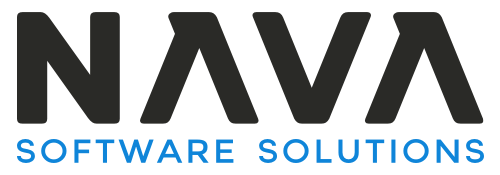A Step-by-Step Guide for Enterprises
Digital transformation is more than a trend; it’s a critical step for enterprises aiming to stay competitive, resilient, and customer-focused in today’s dynamic business landscape. However, for many organizations, embarking on this journey can be daunting, with challenges ranging from legacy systems to cultural resistance and cybersecurity concerns.
In this guide, we’ll walk through a step-by-step approach to navigating digital transformation. Whether your goal is to enhance customer experience, streamline operations, or gain data-driven insights, following these steps will set a strong foundation for a successful transformation.
Best Practices for a Seamless Transition in BOT Models
1. Establish Clear Objectives and Expectations
The foundation of a successful BOT transition lies in establishing clear objectives and expectations from the outset. This includes defining specific goals for each phase, identifying key performance indicators (KPIs), and setting a timeline for the transfer. Both the client and the service provider should agree on these objectives, ensuring alignment throughout the process.
Key Considerations:
- Project Scope and Goals: Clearly outline the scope, including infrastructure, staffing, and technology requirements.
- Timeline and Milestones: Define realistic timelines and key milestones for each phase, including transfer criteria.
- Success Metrics: Establish KPIs to measure progress and determine when the operation is ready for transfer.
2. Develop a Detailed Transition Plan
A comprehensive transition plan acts as a roadmap for each phase of the BOT model, outlining tasks, responsibilities, and handover processes. This plan should address each stage of the transition and detail the steps required to move from building to transferring the operation seamlessly.
Transition Plan Components:
- Role Assignments: Define the responsibilities of both the client and the provider at each stage.
- Knowledge Transfer: Outline processes for transferring operational knowledge, including training sessions, documentation, and mentoring.
- Risk Mitigation: Identify potential challenges or risks and develop contingency plans to manage them.
3. Focus on Robust Knowledge Transfer
Knowledge transfer is crucial to ensure that the client team is prepared to take over operations seamlessly. The knowledge transfer process should be ongoing, beginning in the operation phase and continuing through to the transfer phase.
Best Practices for Knowledge Transfer:
- Comprehensive Documentation: Maintain detailed documentation of processes, workflows, system configurations, and troubleshooting guides.
- Training Programs: Conduct regular training sessions covering both technical and operational aspects to build the team’s competency.
- Hands-On Practice: Allow the client’s team to shadow the provider’s team during operations, gradually taking on responsibilities as the transfer approaches.
4. Emphasize Process Standardization
Standardized processes are essential for a seamless transition, ensuring that operations remain consistent, efficient, and aligned with the client’s objectives. The service provider should establish clear workflows, reporting mechanisms, and operational procedures during the build and operate phases.
Steps for Process Standardization:
- Define Workflows: Develop structured workflows for daily tasks, reporting, and communication.
- Use Automation Tools: Where applicable, leverage automation tools to streamline processes and reduce manual work.
- Implement SOPs: Create and document standard operating procedures (SOPs) for key processes to ensure continuity and minimize disruptions during transfer.
5. Prioritize Communication and Collaboration
Frequent communication between the client and provider fosters transparency, collaboration, and alignment. Regular updates, progress reports, and meetings ensure both parties are aware of current progress, potential challenges, and adjustments needed to stay on track.
Communication Best Practices:
- Scheduled Check-Ins: Hold weekly or bi-weekly check-ins to review progress, discuss concerns, and make adjustments.
- Open Communication Channels: Ensure open communication lines between both teams, allowing for real-time issue resolution and feedback.
- Collaborative Tools: Use collaboration tools like project management software, shared dashboards, and instant messaging platforms to keep everyone updated.
6. Implement Gradual Handover Procedures
A phased handover approach is beneficial to minimize disruptions during the transition phase. The gradual handover allows the client’s team to assume more responsibilities over time, with the service provider available to provide support and address issues as they arise.
Gradual Handover Steps:
- Shadowing Phase: The client team shadows the provider team to understand operations firsthand.
- Partial Ownership: The client team takes over specific tasks or processes, while the provider offers oversight and support.
- Full Handover: The provider completes the transfer, with the client assuming full control and the provider offering post-transfer support if needed.
Success Stories
1. Seamless BOT Transition for a Healthcare Company
Seamless BOT Transition for a Healthcare Company
A healthcare organization wanted to set up a global capability center (GCC) to handle IT operations but lacked the internal expertise for setup and early-stage management. Partnering with NAVA Software Solutions, the company implemented a BOT model, allowing NAVA to build and operate the GCC and later transfer it to the client.
Key Highlights:
Structured Knowledge Transfer: NAVA implemented a structured training program, equipping the client’s team with the skills needed to handle daily operations.
Phased Handover: The client team took over responsibilities gradually, with NAVA providing support throughout the transition.
Results: The healthcare company achieved a seamless transition and improved operational efficiency, reducing operational costs by 25% in the first year.
2. Scaling Operations for a Manufacturing Client Through BOT
A global manufacturing company aimed to establish a cost-effective offshore operations center for R&D and customer support. Using the BOT model, NAVA built the center, hired and trained staff, and managed operations until the center reached optimal performance.
Key Highlights:
Standardized Processes: NAVA established standardized workflows and automated routine tasks, ensuring a smooth transition.
Effective Communication: Regular progress meetings kept both teams aligned, facilitating a collaborative and transparent process.
Results: The client successfully assumed full control of the center, achieving 35% savings in operational costs and a 40% improvement in productivity.
Conclusion
The Build-Operate-Transfer (BOT) model offers an effective way for organizations to set up new operations or offshore centers with minimal risk and investment. However, a seamless transition requires a collaborative approach, careful planning, and attention to detail at every stage. By establishing clear goals, focusing on knowledge transfer, and ensuring standardized processes, companies can achieve a smooth and successful transition to full ownership.
At NAVA Software Solutions, we specialize in guiding clients through each phase of the BOT model, from initial setup to final transfer. Our expertise and commitment to operational excellence make us a trusted partner for organizations looking to expand and grow in new markets. Contact us today to learn how we can help you achieve a seamless BOT transition tailored to your unique needs.



